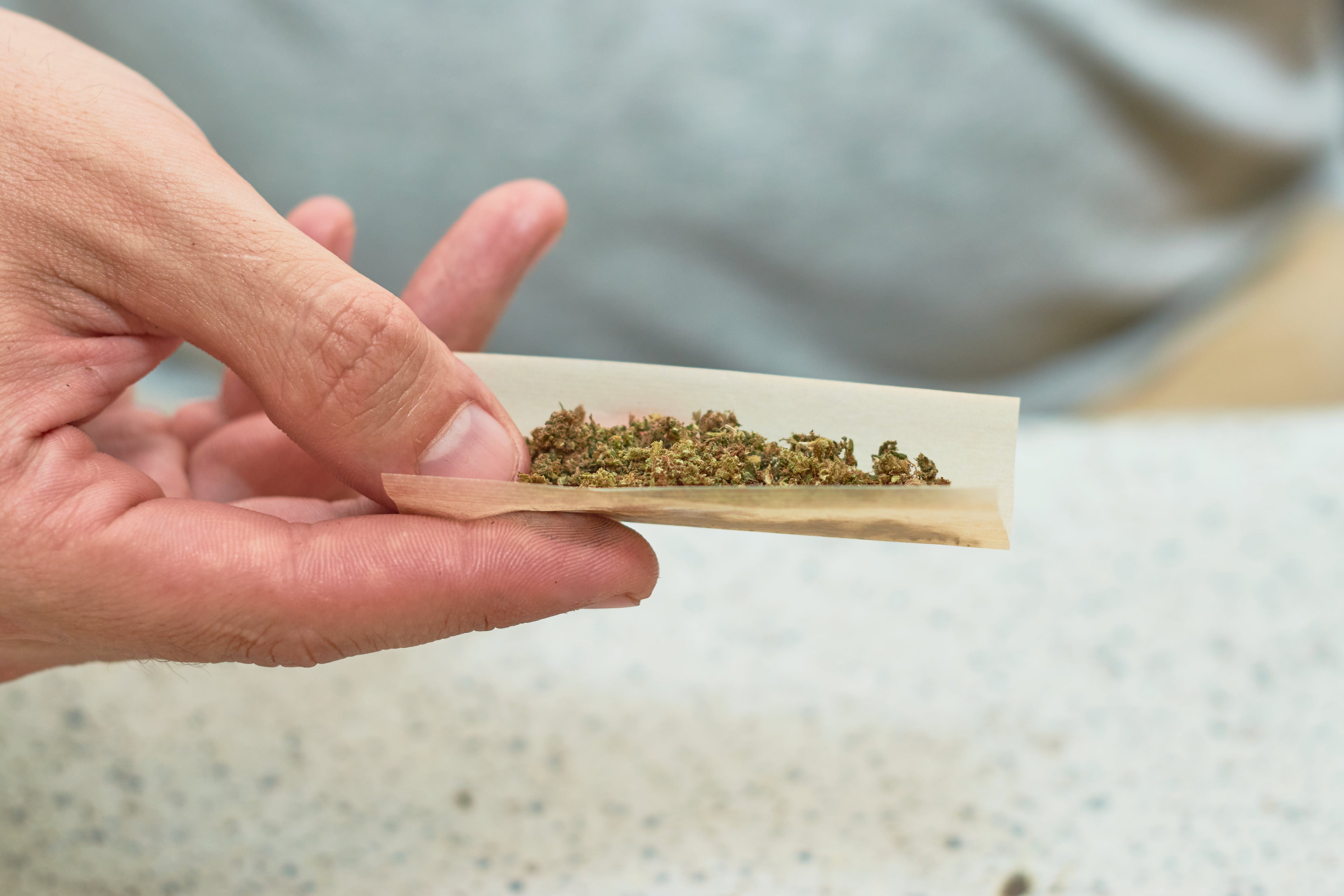Flavored rolling papers affect taste through lip and tongue contact during the first 25% of smoking without altering your herb's natural flavor. These taste-enhanced papers, also called aromatic rolling papers or flavored wraps, add taste enhancement rather than masking the smoking material.
Understanding how rolling papers work, their benefits and drawbacks, and when to use them can help you decide if they're right for your smoking preferences. This guide explains how these specialty papers work, when to use flavored smoking papers, and how to choose quality options for optimal results.
How Flavored Rolling Papers Actually Work
Understanding the manufacturing processes behind flavored papers helps explain their performance characteristics and quality differences. Different methods produce varying levels of flavor intensity and duration.
Manufacturing Methods
Flavored rolling papers use four manufacturing methods: food-grade ink printing, triple-dip flavoring processes, gum strip concentration, and botanical terpene infusion. Food-grade flavoring with soy-based inks represents the most common approach, creating a thin flavor layer that activates when heated.
Triple-dip systems apply flavor multiple times for stronger, longer-lasting taste experiences. Some brands concentrate flavoring on the gum strip area, which activates when the gum is sealed and smoked.
Alternative Delivery Approaches
Botanical terpenes replace traditional food flavorings in newer specialty papers. These natural plant compounds may influence both taste and smoking effects beyond regular flavoring agents, though concentrations remain relatively low.
Flavored filter tips offer another delivery method, concentrating taste enhancement at the mouthpiece instead of throughout the entire paper surface.
Flavor Delivery and What to Expect
Flavored papers deliver taste in specific ways that differ from regular papers, affecting when and how intensely you experience the flavor enhancement. Understanding these patterns helps set realistic expectations for your aromatic smoking experience.
Timing and Intensity
How long do flavored rolling papers last? Flavored papers taste strongest on the lips and tongue during the first 25% of smoking, with peak intensity occurring in the first 3-5 puffs. The taste enhancement then gradually diminishes as the flame moves away from flavored areas.
Gum strip flavoring creates brief but noticeable taste bursts lasting approximately 2-3 minutes. Fully infused papers maintain flavor for longer throughout the session, typically providing 5-7 minutes of enhanced taste. Higher-quality aromatic papers have a cleaner taste without artificial aftertastes.
Interaction with Your Material
Does flavored paper change the herb's taste? The flavor enhancement doesn't penetrate deep into your smoking material or alter the herb's natural terpene profile. Flavored wraps work alongside your herb's natural compounds rather than competing with them.
Different flavoring methods produce varying intensity levels and duration patterns. Some provide concentrated taste bursts at the beginning, while others maintain subtle aromatic notes throughout the session.
Popular Flavor Categories and Their Effects
Different flavor categories offer distinct taste experiences and are better suited for various types of users and situations. Each category has unique characteristics that affect timing, intensity, and overall smoking experience.
Fruit and Sweet Options
What are the best flavors for beginners? Fruity flavors like strawberry, mango, and green apple provide a sweet, refreshing taste enhancement that works well for beginners and social smoking situations. These fruit-based flavoring compounds create approachable taste profiles that mask harsh smoke characteristics.
Sweet flavors, including vanilla, chocolate, and caramel, create rich, dessert-like aromatic experiences. These indulgent taste profiles work best for evening sessions or special occasions.
Fruit flavoring agents typically provide 3-4 minutes of noticeable taste, while sweet varieties can extend flavor duration to 5-6 minutes.
Herbal and Spice Varieties
Which flavors complement the natural herb taste? Spicy and herbal options, such as cinnamon, mint, and lavender, offer complex flavor profiles that complement rather than mask the natural characteristics. Mint varieties create cooling sensations through menthol compounds, while herbal flavors work synergistically with plant-based materials.
Fruity taste-enhanced papers are strongest at the beginning, sweet flavoring compounds last longer, and herbal options feel most natural throughout the entire smoking session.
When to Use Flavored Papers
Choosing between flavored and unflavored papers depends on your experience level, the type of smoking materials you use, and your personal preferences. Different situations call for different approaches to maximize your enjoyment and aromatic enhancement experience.
Best Use Cases
When should you choose flavored rolling papers? Beginning smokers benefit from fruit and sweet flavors that mask harsh smoke characteristics while users develop tolerance and flavor preferences. Social situations work well with aromatic papers for novelty and conversation appeal.
Special occasions can be enhanced with unique or seasonal taste-enhanced papers. Lower-quality or harsh smoking materials improve significantly with flavored wraps that help mask unpleasant tastes.
When to Choose Unflavored
Which situations call for regular papers? Premium herbs with complex, nuanced flavor profiles are best showcased with unflavored papers that don't interfere with their natural terpene profiles. Performance-focused users who prioritize consistent burn rates should choose unflavored alternatives.
Health-conscious users concerned about flavoring additives prefer unflavored papers made from minimal ingredients.
Cost Analysis and Value Assessment
Flavored papers represent a significant investment compared to regular papers, making value assessment crucial for different user types. Understanding the cost factors helps you make informed purchasing decisions based on your usage patterns.
Price Comparison
How much do flavored rolling papers cost? Flavored rolling papers typically cost significantly more than regular papers due to the additional processing and flavoring ingredients required. The price difference reflects the more complex manufacturing processes and specialized materials required for this product.
Value Calculation
Are flavored papers worth the extra cost? Consider cost per session rather than per-paper pricing when evaluating value. Heavy users may find regular papers more economical for daily use, while occasional users can justify premium flavored options for special occasions.
Factor in potential waste from learning to handle more delicate aromatic papers when calculating the true cost per successful roll. Success rates for new users typically range from 60% to 70% with flavored papers, compared to 80% to 85% with regular papers.
Bulk Buying Considerations
Should you buy flavored papers in bulk? Bulk purchasing often reduces per-unit costs, but storage requirements become more critical with larger quantities. Flavored wraps have shorter shelf lives than regular papers (typically 6-12 months versus 18-24 months), affecting bulk buying decisions.
Safety and Quality Considerations
Safety should be your primary concern when choosing flavored papers, as ingredients and manufacturing quality vary significantly between brands. Understanding safety standards and quality indicators helps you avoid potentially harmful products.
Ingredient Safety
What ingredients should you avoid in flavored papers? Choose aromatic papers with FDA-approved food-grade flavorings. Avoid products with artificial preservatives, synthetic chemicals, or unlisted additives. Quality manufacturers list ingredients clearly and use safe flavoring compounds.
Look for simple, recognizable ingredients in taste-enhanced papers. Natural flavoring derived from fruit extracts, essential oils, or botanical sources generally provides safer options than artificial flavoring compounds. For those prioritizing natural ingredients, exploring organic rolling papers and their benefits becomes an important consideration when evaluating overall product safety and quality.
Brand Quality Assessment
How do you identify quality flavored paper brands? Avoid aromatic papers with harsh chemical odors or overpowering artificial scents, as these often indicate inferior manufacturing processes. Avoid purchasing from unknown manufacturers that lack ingredient transparency.
Research brand reputations and read user reviews to identify companies known for quality and safety. Extremely cheap flavored wraps often use lower-quality flavoring compounds that may taste harsh or pose safety concerns.
Quality Testing Methods
Evaluating the quality of flavored paper before purchase helps avoid disappointing experiences and potential safety concerns. Simple testing methods can reveal manufacturing quality and ingredient safety without requiring specialized equipment.
Visual Inspection
How can you identify quality flavored papers by sight? Examine aromatic papers for consistent ink distribution and uniform paper texture. Quality taste-enhanced papers have even coloring without blotches or streaks that indicate poor manufacturing processes.
Check for proper paper thickness and flexibility in flavored wraps. Papers should bend without cracking and maintain a consistent thickness throughout, typically measuring 12-14 GSM for thin papers or 18-20 GSM for standard weight papers.
Smell and Taste Testing
What should quality flavored papers smell like? High-quality aromatic papers have pleasant, natural aromas that match their stated flavors without being overwhelmed by chemical odors. Chemical or harsh scents suggest inferior flavoring compounds or processing methods.
Premium, taste-enhanced papers maintain their aromatic intensity for 6-8 months when stored properly.
Burn Test Assessment
How do you test the burn quality of flavored paper? Test a small piece to evaluate burn characteristics before using full papers. Quality flavored wraps burn evenly with clean, white ash, typically taking 20-30% longer to burn than regular papers due to the presence of flavoring compounds.
Performance and Storage Considerations
Flavored papers have different performance characteristics and storage requirements compared to regular papers. Proper handling and storage techniques help maintain both flavor potency and paper integrity for optimal aromatic smoking experiences.
Performance Factors
How do flavored papers affect burn rate? Flavored wraps burn 5-10% slower than regular papers due to flavoring compounds that affect combustion rates. Premium, taste-enhanced papers maintain consistent burn characteristics despite the addition of flavoring agents.
The rolling technique matters more with aromatic papers than with regular ones. Use gentle pressure and avoid excessive moisture that might dissolve or redistribute flavoring compounds. The flavoring process can affect paper flexibility or tear resistance, with success rates typically 10-15% lower for beginners.
Storage Requirements
What are the best storage conditions for flavored papers? Storage requirements are critical for maintaining both flavor potency and paper integrity. Store taste-enhanced papers in cool, dry conditions, maintaining a temperature below 70°F and a relative humidity of under 50%, to effectively preserve flavoring compounds.
Store aromatic papers in airtight containers for long-term storage, as they typically maintain their quality for 6-12 months, compared to 18-24 months for regular papers. Temperature fluctuations above 80°F can degrade flavoring compounds within 30 to 60 days.
Environmental and Seasonal Considerations
Environmental factors significantly impact the performance and storage of flavored paper, with climate conditions affecting both the flavor intensity and the paper's handling. Seasonal changes necessitate adjustments to storage to maintain optimal paper quality throughout the year.
Climate Effects
How does climate affect flavored paper performance? Humidity levels significantly impact the performance and flavor retention of aromatic paper. High humidity (above 60%) can cause taste-enhanced papers to become limp and difficult to roll, while low humidity (below 40%) leads to brittleness and increased tearing rates of 25-30%.
Temperature fluctuations affect flavor intensity and paper flexibility substantially. Extreme heat above 85°F can degrade flavoring compounds within 4-6 weeks, while cold temperatures below 50°F may make papers more brittle.
Seasonal Storage Adjustments
What storage changes are needed for different seasons? Winter heating systems often create dry conditions (with humidity levels below 30%) that require humidity control for the proper storage of aromatic papers. Summer heat and humidity require air conditioning or climate-controlled storage areas to maintain a humidity range of 45-55%.
Spring and fall temperature swings necessitate attention to storage conditions, as flavored papers adapt to changing environmental conditions. Temperature changes exceeding 20°F within 24 hours can affect flavor potency for 3-5 days.
Troubleshooting Specific Issues
Even high-quality flavored papers can present problems under certain conditions, requiring specific solutions to maintain optimal performance. Understanding common issues and their remedies helps ensure consistent, enjoyable aromatic smoking experiences.
Flavor Problems
Why do flavored papers lose their taste? Flavor fade during storage indicates improper humidity control or excessive heat exposure. Improve storage conditions and check packaging integrity to maintain flavor strength.
Chemical taste problems often stem from the use of low-quality flavoring compounds or inadequate processing methods. Switching to higher-quality taste-enhanced papers with natural flavorings typically resolves these issues within one session.
Flavor intensity reduction typically occurs at rates of 10-15% per month under poor storage conditions compared to 2-3% per month with proper climate control.
Handling and Rolling Issues
How do you fix uneven flavor distribution? Uneven flavor distribution may result from manufacturing inconsistencies or handling damage during storage. Gentle handling and proper storage help maintain flavor consistency across papers.
Rolling difficulties with aromatic papers may require adjustments to technique and practice. Slightly higher humidity levels (50-55%) can improve paper flexibility without damaging flavoring compounds. Success rates improve from 60-70% to 85-90% within 10-15 practice sessions for most users.
Performance Issues
What causes flavored papers to tear frequently? If aromatic papers tear more frequently than regular papers, reduce rolling pressure by approximately 25-30% and ensure hands are completely dry during handling. Excessive moisture dissolves flavoring and weakens the paper structure.
Uneven burning typically results from inconsistencies in flavoring application during manufacturing. Select reputable brands with superior quality control for more reliable and consistent performance.
Common Mistakes and How to Avoid Them
Many users make preventable mistakes with flavored papers that reduce flavor intensity, damage papers, or create poor smoking experiences. Understanding these common errors helps you get maximum value from your taste-enhanced paper investment.
Storage Mistakes
What storage errors damage flavored papers the most? Never store aromatic papers in direct sunlight or near heat sources, which degrade flavoring compounds rapidly within 2-3 weeks. Avoid storing in the refrigerator, as this creates condensation that can damage both the flavor and the paper structure.
Don't store different flavored wraps together without separate sealed containers, as flavors can transfer and create unpleasant combinations within 30-45 days of contact. Temperature storage above 85°F reduces flavor potency by 25-30% within one month. Understanding proper storage techniques for rolling papers becomes even more critical with flavored varieties, as improper storage can diminish both taste quality and paper performance.
Rolling Technique Errors
What rolling mistakes compromise the performance of flavored paper? Avoid using excessive saliva or moisture when sealing taste-enhanced papers, as this can dissolve the flavoring and create uneven distribution patterns. Avoid overhandling aromatic papers, as this can transfer oils from your fingers and affect the flavor delivery on 20-30% of the paper surface.
Never roll too tightly with flavored papers, as this can damage flavoring application and create uneven burning patterns. Optimal rolling pressure is 20-30% lighter than regular papers to prevent compound damage.
Selection and Usage Mistakes
Which flavored paper choices create poor experiences? Avoid using intense flavors when working with premium herbs, as this can mask the subtle, natural characteristics you want to experience. Avoid using aromatic papers for performance testing or evaluation sessions where neutral conditions are needed.
Don't assume all taste-enhanced papers from the same brand perform identically, as different flavors may have different burn characteristics and intensity levels. Fruit flavors typically burn 5-8% slower while herbal varieties burn 3-5% slower than regular papers.
Are Flavored Rolling Papers Worth the Investment
Flavored rolling papers affect taste through direct lip and tongue contact during the first 25% of smoking, while preserving the herb's natural flavor profile throughout the remainder of the session.
They offer legitimate benefits for users seeking sensory enhancement, social appeal, or help managing harsh tastes from lower-quality materials.
The decision ultimately depends on your priorities and smoking style. Beginners and experimental users often appreciate the variety and enhanced experience that flavored papers offer. Purists focused on natural herb flavors or performance optimization typically prefer unflavored alternatives.
For users interested in premium flavored rolling papers, products from established manufacturers like Futurola offer quality assurance and innovative approaches, including terpene-enhanced varieties that push beyond traditional flavoring methods. Whether flavored papers enhance your experience depends on selecting the right products that meet your specific needs and expectations.





LEAVE A COMMENT
All comments are moderated before being published.
This site is protected by hCaptcha and the hCaptcha Privacy Policy and Terms of Service apply.